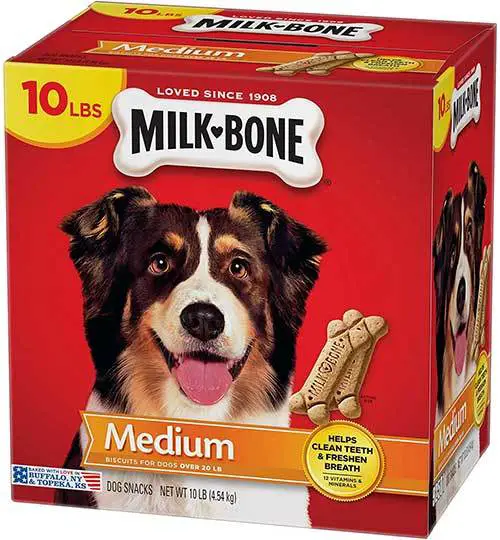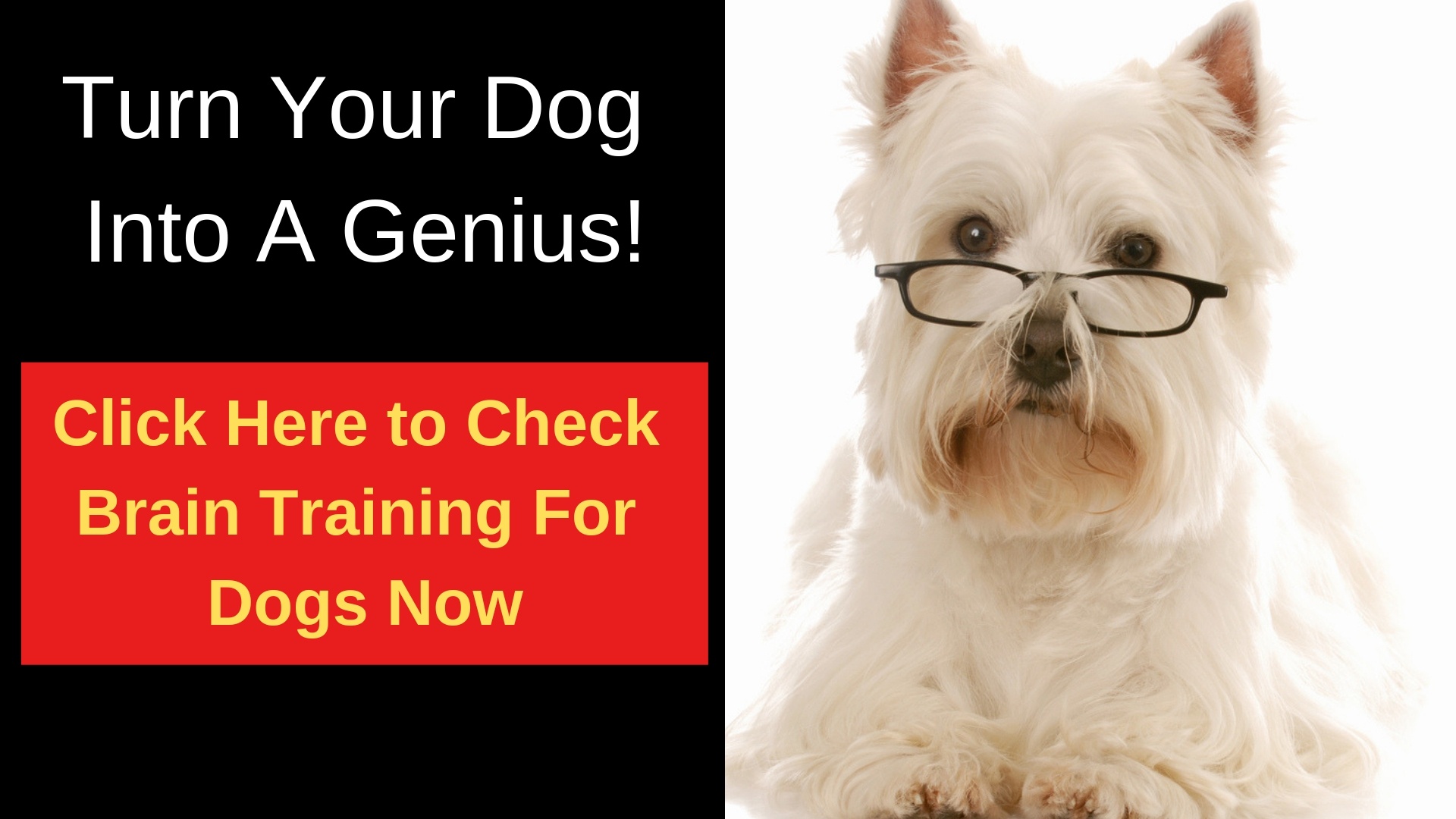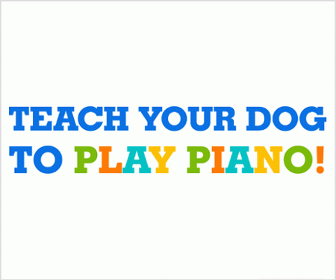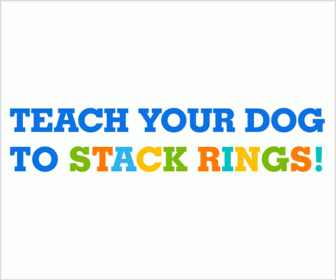Smart dogs can sniff out drugs, perform clever tricks such as shaking hands (give paw) on cue, herd sheep, assist people with disabilities and hunt down criminals.
Can your dog get smarter? How “smart” your dog really is simply a revelation of how well trained he or she is.
Contrary to popular belief, smartness in dogs is highly subjective and can be improved regardless of your dog’s breed or age.
So yes, you can teach your old dog new tricks…but the big question is how can you develop your dogs intelligence?
Below is a list of 5 fun and easy ways to make your dog smarter regardless of your dog’s breed or age.
Table of Contents
1. Word Associations
Ever wonder how your dog can understand words such as “fetch”, “sit” and “down” when (s)he hears them?
Studies show that the average dog has about the same level of intelligence as a 2 year old baby. That means that your dog can understand a similar range of words (at least 200) as your 2 year old baby.
Teach your dog to associate words with a series of behaviors, activities and items.

In order to teach your dog to identify nouns representing things such as a “leash”, his “feeding bowl” or even to differentiate between your “boots” and “heels” on cue, hold up the thing as you say the word (its name) out so as to teach him or her to identify it when (s)he heard it.
Verbs such as “eat”, “sit” and “stay” can also be used to train your dog to perform certain behaviors on command.
Verbal cues will help you communicate with your dog and build a rapport that will unlock lot of opportunities for your dog to learn a great deal of new things.
[thrive_leads id=’7777′]2. Gestures
Sign language is the use of your hands to signal to your dog what you want him or her to do.
Like humans, dogs are excellent at reading body language. Sign language though often used to train dogs is especially useful in training deaf dogs who cannot respond to verbal commands.
? Dogs respond quicker to pointing gestures and other hand signals compared to verbal cues and commands.
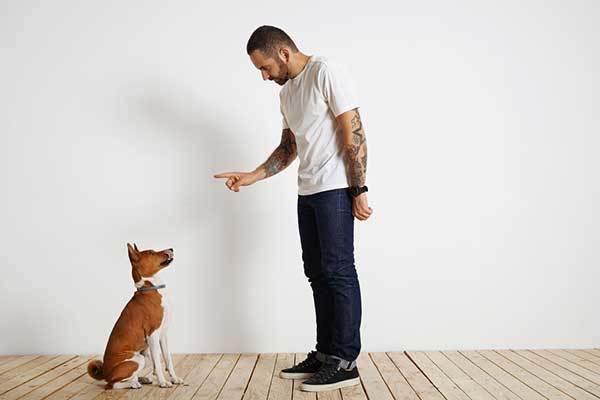
Dogs are naturally talented at reading body language but not necessarily at interpreting verbal speech. Gestures will therefore go a long way in aiding your furry friend’s understanding of various instructions and commands thus making him smarter over time.
The ‘Drop it’ or ‘release’ command for example is one of the most important commands you can teach your dog. Dogs are always picking up things with their mouths in a bid to explore their surroundings.
Some of these things may be hazardous to your dog’s health and or very sensitive, expensive or fragile.
Pointing to the ground in a bid to get your dog to drop something in exchange for a treat will prove to be an invaluable skill to teach your dog to perform on cue and will allow you to protect your best friend from harm’s way.
Hand signals such as the “come” hand signal will also prove particularly useful when your dog is far from you or your voice’s reach.
3. Training
In an experiment, putting trained dogs against untrained dogs, researchers put some dog treats in a box and enticed the dogs to take it. You needed to open the lid to get at the food treat, a date which could only be done by:
– The dog pressing the paw pad that is attached to the box or he will have to poke the lid with his nose.
The exercise was designed to gauge a dog’s intelligence or problem solving ability. The box was then closed with the experimenter making sure that the dog watched all he did all through.
He then proceeded to demonstrate to the dog, the two various ways to open the box, that is by pressing the paw pad or manipulating the lid.

After all the dogs had been allowed to interact and familiarize themselves with the experiment apparatus for about two minutes, the research study revealed a host of astonishing results.
? Only 30% of the untrained dogs solved the problem; successfully managing to access the food. Just about 61% in the group of trained dogs, which was more than twice the percentage of untrained dogs were successful.
Trained dogs utilized a lot of their time working at their apparatus trying to solve the puzzle and little time watching what their owner did and the experimenter compared to their untrained counterparts.
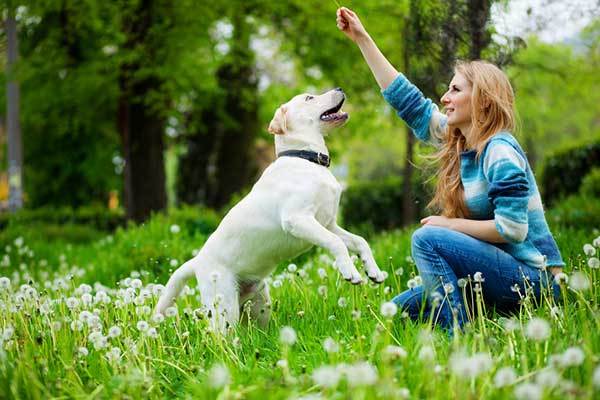
Meaning then, that though the experiment was a new exercise and the dogs who were trained had never been trained to perform before, the simple fact that they had had various kinds of training before made them better problem solvers than untrained dogs.
? Dogs who are trained are not smarter per se, but they have been taught that when faced with a problem, that problem must have a solution and if they just tried hard enough to be able to get the solution, they will get a reward.
Thus because they have learned to keep on focusing the issue itself and the subsequent result of solving it, they keep on trying and are more likely to successfully solve the problem and appear smarter.
[thrive_text_block color=”note” headline=””]LEARN ABOUT IT: 13 Common Dog Training Mistakes You Ought to Avoid [/thrive_text_block]4. Dog Intelligence Games
While games such as fetch and tug-a-war go a long way in keeping your dog physically fit, his physical body isn’t the only thing that he needs to exercise daily.
Dogs are very smart animals that need to stimulate their minds just as much as their bodies. Fun and mentally stimulating games help your dog develop his intelligence and are a fun way to make your dog smarter.

Hide and Seek – helps your dog use his nose and ears to seem you out.
Treasure hunts – let your dog use his powerful sense of scent to sniff out a series of treats.
The Name Game – Teaches your dog a range of new names by telling him the name of an object and watching him seek it.
[thrive_text_block color=”note” headline=””]ALSO READ: The Top 20 Best Puzzle Toys For Your Bored Dog [/thrive_text_block]5. Positive Reinforcement
Make sure to reward behaviors that you like and ignore those you don’t like. Dogs, just like kids like to be praised, and given treat.
Positive reinforcement allows you to communicate in a clear and understandable manner with your dog by letting him know what actions you desire him to perform.
Rewarding positive behavior is also more likely to lead to its repetition as dogs are the ultimate people pleasers.
Rewarding the behavior you want will also strengthen the bond between your and your best friend while maintaining his trust in your relationship.
Coming up with new tricks and fun games to aid in training your dog to be smarter can be a difficult task.
With all the pressures of work, human relationships and life in general, getting on Google every day after work to search for “training games to play with your dog” is not how most of us would like to spend our evenings.
Brain training for dogs is a step by step online dog training program to help you solve just that.
Training your dog can be a challenging task, but training your dog as an inexperienced dog owner; without any help, is an especially big problem. That’s why Adrienne Faricelli, creator of the brain training for dogs program is a god send.
Adrienne is a Certified Pet Dog Trainer – Knowledge Assessed, an earned credential given by the Independent Council for Certified Dog trainers after one has met strict set of requirements including a minimum number of hours training dogs (with proof), passing through a multi-national exam and then finally providing a reference from a Certified veterinarian.
She has also been published in a number of well-known publications including USA Today.
Brain training for dogs uses 21 fun games to train your dog through force-free activities designed to engage his mind. Taught in an easy to advanced format, the program emulates traditional education by being divided into 7 modules:
#1- Preschool
#2- Elementary
#3- High School
#4- College University Graduation Einstein (Genius)
The course also includes a guide for behavior training which is a huge bonus especially for dog owners not starting with an already well behaved dog.
The course is laid out in sequence with games and skills that build on each other ,for example: Target training and 2 attention games in preschool which are critical for ensuring your dog’s success in the later modules. Fun games like “muffin tin” and “ball pit” in elementary. Scent work and calming down on cue in high school.
Patience games and more scent work in college. Hide and seek as a foundation for search and rescue or servo of training in university. As well as scent discrimination, performance of various tricks and agility training in the graduation and Einstein modules.
Other topics such as puppy training, behavior problems and case studies are also additional perks that come with membership to the program presented in a straightforward and easy to learn format.
The puppy training section delves into topics such as:
– 7 Potty training strategies.
– Puppy learning and development.
– How to stop your puppy from engaging in unwanted behaviors such as hand nipping, whining (4 sub topics to help you identify the particular type of whining plaguing your dog), barking, jumping, digging and chewing.
Adrienne also provides examples of dog body language crucial for every loving dog owner to know while reiterating them in the lessons where you’re most likely to witness the behaviors.
The case studies showcase real life results from brain training for dogs by introducing members to 2 dogs brought to her for training.
Follow the dog’s progression as Adrienne applies her training methods to these 2 unfamiliar dogs from videos showcasing their negative behaviors with explanations as to age might cause such behavior to the actual techniques and strategies used by Adrienne to train these dogs.
Several other real life results and positive reviews from dog lovers who have bought the program are also easily accessible online.
Brain training for dogs is an easy to understand, affordable all in one behavior guide and training program with a money back guarantee that assures you that it’s trainer is willing to stand behind her work.
For more information please check out brain training for dogs here.




